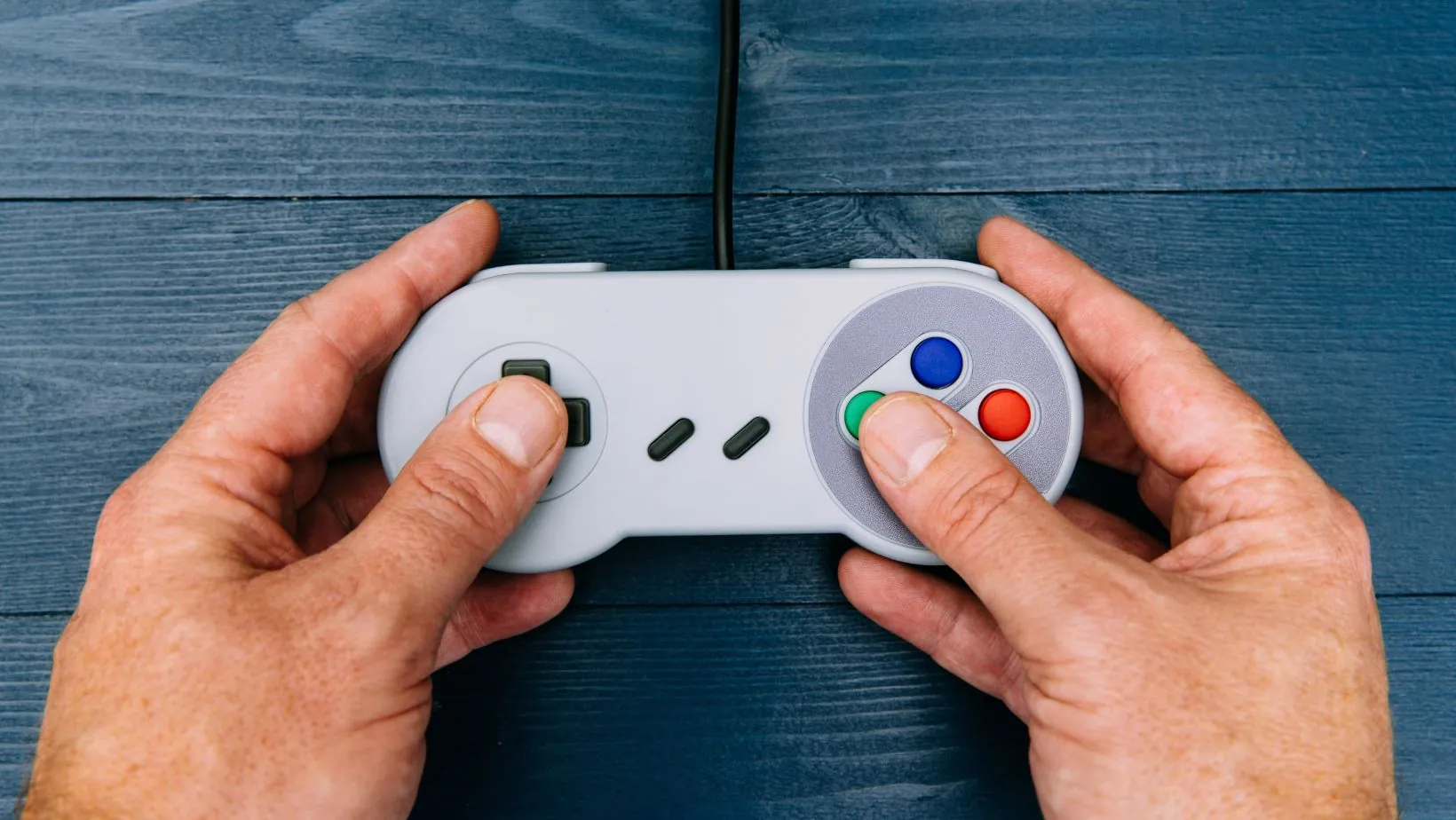In the ever-evolving world of gaming, choosing the right device can feel like picking a favorite child—impossible! Enter the ASUS ROG Ally and the Lenovo Legion Go, two titans vying for your attention and hard-earned cash. Both promise an epic gaming experience, but which one deserves a spot in your gaming arsenal?
Table of Contents
ToggleOverview of ASUS ROG Ally and Lenovo Legion Go
The ASUS ROG Ally and Lenovo Legion Go stand out in the competitive gaming market. Both devices target gamers seeking high performance and versatility.
Key Features of ASUS ROG Ally
ASUS ROG Ally features a vibrant 7-inch IPS display, offering a resolution of 1920 x 1080 pixels for crisp visuals. Powered by an AMD Ryzen Z1 processor, it handles demanding games efficiently. It includes 16GB of RAM, which supports seamless multitasking. The device also comes with customizable RGB lighting, enhancing its aesthetic appeal. With a 512GB SSD, it provides ample storage for games and applications. Connectivity options include Wi-Fi 6E and Bluetooth 5.2, ensuring fast wireless performance.
Key Features of Lenovo Legion Go
Lenovo Legion Go boasts an impressive 8.8-inch QHD display, ensuring vivid colors and sharp images. It operates on an AMD Ryzen 7 7840U processor, delivering robust performance for serious gamers. Featuring 16GB of LPDDR5 RAM, it manages multiple applications effortlessly. The device has a generous 1TB SSD, accommodating extensive game libraries. Equipped with a 49.2Wh battery, it offers extended gaming sessions without frequent recharges. Additional features include ergonomic controls and customizable game profiles, catering to various gaming styles.
Performance Comparison
Performance plays a crucial role when deciding between the ASUS ROG Ally and the Lenovo Legion Go. Each device has specific strengths that cater to different gaming needs.
Processor and Graphics
The ASUS ROG Ally operates on an AMD Ryzen Z1 processor, delivering solid performance for most gaming titles. In contrast, the Lenovo Legion Go features a more powerful AMD Ryzen 7 7840U processor, which enhances its capability to handle demanding games. Graphics performance also varies significantly; the Ally excels in casual gaming experiences, while the Legion Go provides improved graphics rendering for high-resolution settings. Gamers seeking immersive experiences might prefer the superior power behind the Legion Go.
RAM and Storage Options
Both devices come equipped with 16GB of RAM, providing ample performance for multitasking during gaming. Storage capacity differs notably, with the ASUS ROG Ally offering a 512GB SSD and the Lenovo Legion Go featuring a more generous 1TB SSD. Enhanced storage on the Legion Go allows for more games and data without limiting the user’s options. Each device effectively supports modern gaming demands, yet those needing extensive storage may find the Legion Go more appealing.
Design and Build Quality
Design and build quality play vital roles in the overall gaming experience, and both the ASUS ROG Ally and Lenovo Legion Go excel in their unique ways.
Form Factor and Weight
The form factor of the ASUS ROG Ally measures 7 inches, making it compact and portable. Weighing approximately 600 grams, she provides a lightweight option for gamers on the go. In contrast, the Lenovo Legion Go features a larger 8.8-inch display. Its weight is about 850 grams, which gives it a more substantial feel, appealing to gamers who prefer a more robust build in their hands. Both devices feature sleek designs that reflect their gaming-oriented purpose. The ROG Ally prioritizes portability, while the Legion Go offers a larger display for immersive visuals.
Ergonomics and Usability
Comfort during long gaming sessions is essential, and ergonomics greatly affect usability. The ASUS ROG Ally incorporates rounded edges and textured grips, ensuring tactile feedback. Button placement promotes intuitive navigation, enhancing user interaction. Alternatively, the Lenovo Legion Go presents a thoughtfully designed layout. Its controls are strategically placed for easy access, catering to extended gameplay. Gamers appreciate the adjustable features of the Legion Go, allowing for customization based on individual preferences. Both devices focus on enhancing comfort, yet they offer distinct approaches to design that may influence user choices.
Display Specifications
Display specifications play a crucial role in the overall gaming experience of both devices. The differences highlight the unique strengths of each gaming device.
Screen Size and Resolution
ASUS ROG Ally features a 7-inch IPS display with a resolution of 1920 x 1080 pixels. This combination offers sharp visuals suitable for most gaming sessions. In contrast, Lenovo Legion Go presents an impressive 8.8-inch QHD display that pushes the resolution to 2560 x 1600 pixels. The larger screen real estate enhances immersion, allowing for more detailed graphics during gameplay. Both screens deliver vibrant colors and good viewing angles, but Legion Go’s higher resolution provides a more captivating visual experience.
Refresh Rate and Color Accuracy
Refresh rate impacts how smoothly games render on both devices. The ASUS ROG Ally can achieve a refresh rate of up to 120Hz, ensuring fluid transitions during fast-paced gaming. Lenovo Legion Go, on the other hand, offers a refresh rate of 144Hz. This higher rate boosts performance, providing an edge in competitive gaming scenarios. Color accuracy is another key element. The ROG Ally excels in producing vivid hues with good brightness levels, while the Legion Go’s display maintains excellent color reproduction, making graphics appear more realistic. Both devices prioritize providing a top-notch visual experience, appealing to gamers seeking dynamic gameplay.
Battery Life
Battery life significantly impacts gaming experiences. It determines how long a device can sustain intensive gaming sessions without needing a charge.
General Usage
In everyday use, the ASUS ROG Ally offers a battery life of approximately 2 to 3 hours, which is average for portable gaming devices. Users might find this sufficient for casual play. That said, typical tasks could extend battery longevity slightly. On the other hand, the Lenovo Legion Go performs better with a battery life of around 4 to 5 hours, catering to gamers who engage in longer sessions without interruptions. Users benefit from the larger battery capacity in a device designed for extended gaming. Both batteries support quick charge capabilities, yet the Legion Go’s higher endurance gives it a notable advantage in general usage.
Gaming Performance
During gameplay, the ASUS ROG Ally faces challenges due to its limited battery life when running demanding titles. High-demand games can drain its battery quickly, possibly leading to shorter play periods. Conversely, the Lenovo Legion Go excels here, maintaining solid performance for up to 5 hours in resource-intensive gaming scenarios. Gamers appreciate this capability, allowing for uninterrupted sessions in graphically rich titles. Both devices include power management features aimed at optimizing battery usage, but the Legion Go’s robust performance under demanding conditions clearly showcases its superior battery efficiency.
Price and Value for Money
Pricing plays a critical role in determining the overall value of both the ASUS ROG Ally and the Lenovo Legion Go. The ASUS ROG Ally is generally priced competitively, often available around $599, making it an appealing option for gamers on a budget. In contrast, the Lenovo Legion Go typically retails at about $699, reflecting its advanced specifications and features.
Value for money hinges on what gamers prioritize. Both devices offer excellent performance, but the higher price of the Legion Go corresponds with its superior display and enhanced graphics capabilities. For instance, the 1TB SSD in the Legion Go provides a significant storage advantage over the Ally’s 512GB SSD, accommodating more games and applications without external drives.
Considering portability, the ASUS ROG Ally appeals to gamers seeking affordability without sacrificing quality. With its lightweight design and decent performance, it serves as an ideal entry point into handheld gaming. The Lenovo Legion Go, meanwhile, justifies its higher price tag by including features that enhance overall gaming experiences, such as a larger display and superior processor.
Furthermore, customer satisfaction influences perception of value. Positive reviews of the Legion Go often highlight its ergonomic design and versatility, suggesting gamers see the price as warranted. For both devices, warranty options and available accessories may also affect overall value assessments, helping buyers make informed decisions based on potential long-term use.
Ultimately, buyers must assess individual needs against pricing and features. Gamers focused on budget may find the ASUS ROG Ally a good fit, while those prioritizing advanced specs might lean towards the Lenovo Legion Go despite the higher cost. Evaluating these factors ensures a better alignment with specific gaming habits and preferences.
Conclusion
Choosing between the ASUS ROG Ally and the Lenovo Legion Go ultimately hinges on individual gaming preferences and priorities. The ROG Ally offers portability and solid performance for casual gamers at a more budget-friendly price. Its lightweight design and vibrant display make it a great option for those who value convenience.
On the other hand, the Legion Go stands out with its powerful hardware and superior display, catering to gamers who seek immersive experiences and extended gameplay. While it comes at a higher price point, its enhanced graphics and battery life justify the investment for serious gamers. Each device has its strengths, ensuring that there’s a suitable choice for every type of gamer.



